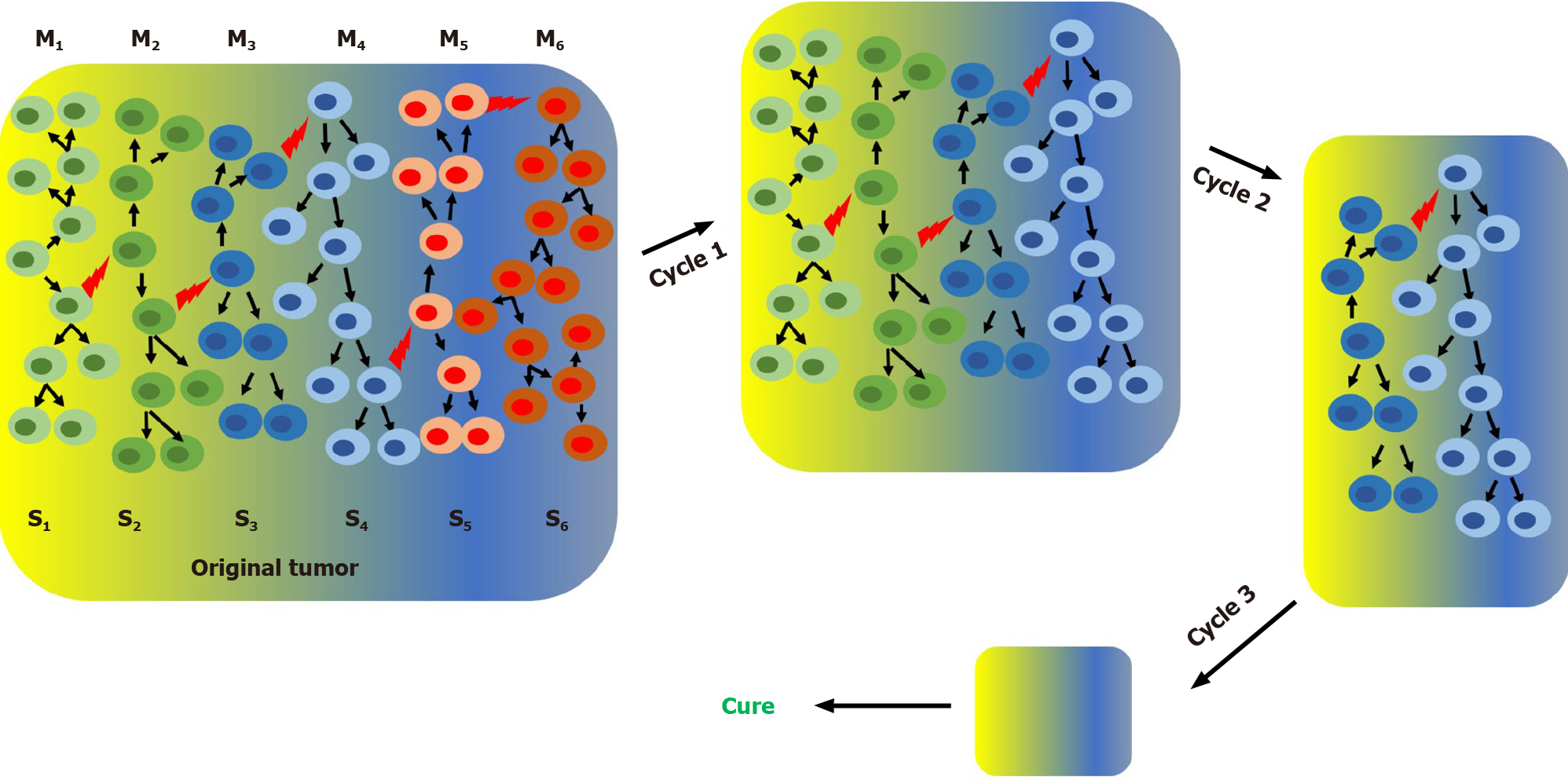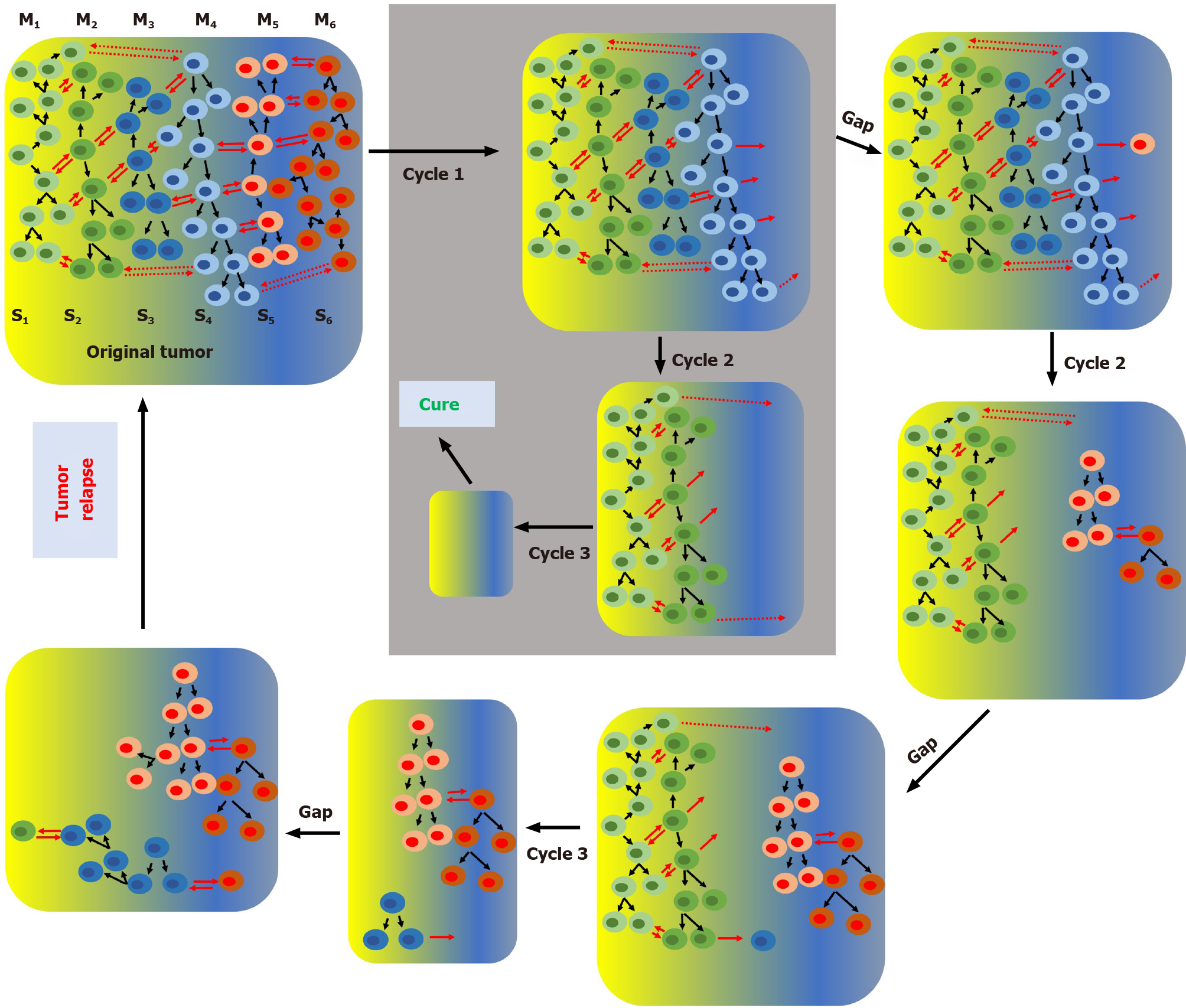Copyright
©The Author(s) 2021.
World J Stem Cells. Jul 26, 2021; 13(7): 934-943
Published online Jul 26, 2021. doi: 10.4252/wjsc.v13.i7.934
Published online Jul 26, 2021. doi: 10.4252/wjsc.v13.i7.934
Figure 1 Clonal stochastic model and effect of treatment with sequential chemotherapy cycles (or steps) on tumor progression.
According to the clonal stochastic model a complex heterogeneous tumor may contain at a certain time, different subpopulations growing in different microenviroments. Clonal proliferation of single primordial cancer cell originates the original subpopulation (S1). During tumor grow random mutations (represented by red lightning bolts) originates all different subpopulations (S1-S6). M1-M6 represent different microenvironments. Since this model is unidirectional repeated cycles of chemotherapy with no gap can gradually deplete specific cell subpopulations, reducing the tumor size and eventually, if all cancer cells are eliminated, lead to a cure.
Figure 2 The stemness phenotype model and effect of treatment with sequential chemotherapy cycles (or steps) on tumor progression.
According to the stemness phenotype model a complex heterogeneous tumor may contain at a certain time, different subpopulations growing in different microenvironments. Clonal proliferation of a single primordial cancer cell originates the original subpopulation (S1). During tumor growth the original subpopulation can interconvert (represented by red arrows) in other phenotypes originating all different subpopulations (S1-S6). M1-M6 represent different microenvironments. Since this model is bidirectional repeated cycles of chemotherapy can gradually deplete specific cell subpopulations, reducing the tumor size and eventually, if all cancer cells are eliminated, lead to a cure. This scenario (shown inside the grey box) can only occur if interconversion is prevented (e.g., when there is no gap between chemotherapy cycles). Any gap between cycles would allow by interconversion the regeneration of cells sensitive to the previous cycle and eventually, lead to tumor relapse.
- Citation: Kaushik V, Kulkarni Y, Felix K, Azad N, Iyer AKV, Yakisich JS. Alternative models of cancer stem cells: The stemness phenotype model, 10 years later. World J Stem Cells 2021; 13(7): 934-943
- URL: https://www.wjgnet.com/1948-0210/full/v13/i7/934.htm
- DOI: https://dx.doi.org/10.4252/wjsc.v13.i7.934














